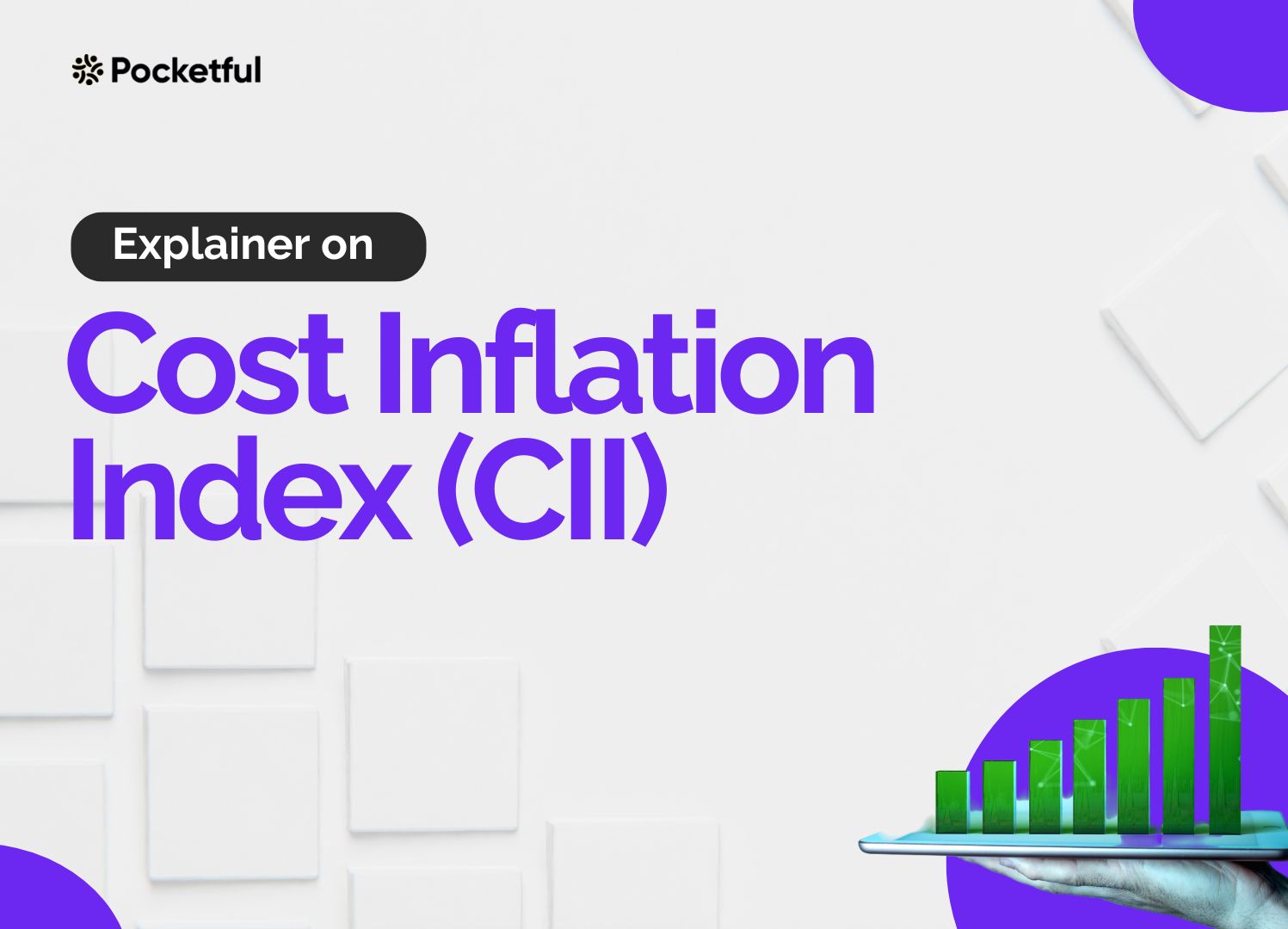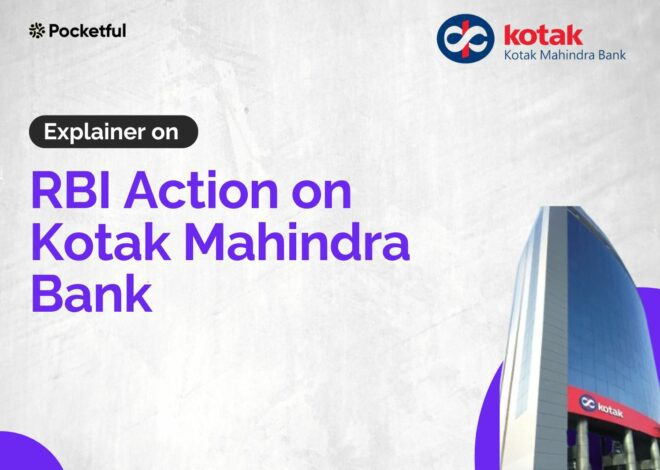
Cost Inflation Index (CII) For FY 2023-24: Index Table, Meaning, Calculation
In India, we have to pay the capital gains tax when you sell something you have had for a while and make a profit from it. But what if inflation has totally eaten away your profit? This is where the Cost Inflation Index, or CII acts like a saviour for Indian investors and makes sure that you are only paying tax on actual gains after adjusting for inflation.
In this blog, we will delve deeper into the world of CII, explaining its role in capital gains calculations, and how it benefits investors.
What is Cost Inflation Index

The CII is a tool used in India to account for inflation while calculating capital gains tax on the sale of long-term assets where inflation is defined as a rise in the prices of goods and services over time. This indicates that the same amount of money will buy you fewer items over time.
In India, the Central Government makes the final decision on the Cost of Inflation Index. The Central Board of Direct Taxes (CBDT), which reports to the Ministry of Finance, is usually involved in the process.
The CBDT is responsible for formulating and administering direct tax policies in India. They most likely evaluate data and economic trends before recommending CII levels to the government. The final notice of the CII for each fiscal year is subsequently issued in the official gazette.
Let us understand why CII is essential with an easy example:
Suppose you bought a property in 1990 for INR 1 lakh and sold it in 2023 for INR 50 lakh. On paper, you made a profit of INR 49 lakh. However, due to inflation, the actual purchasing power of INR 50 lakh is much lower than INR 1 lakh in 1990.
CIIs help address this difference by taking inflation into account and providing a fairer picture of your actual capital gain (profit adjusted for inflation).
The Base Year Concept
The concept of base year likely originated around the 18th or 19th century, coinciding with the development of economic theories.
The absence of a fixed reference point leads to less accurate comparisons in earlier times. The evolution of economic data collection resulted in a growing need for a standardized reference point.
Opting for a specific year as the foundational benchmark enabled the facilitation of comparisons pertaining to several economic indicators such as prices, production, etc.
In the 21st century, the importance of using a ‘normal’ year, free from major economic disruptions, as the base year became more recognized.
Now, many countries, including India, choose to revise their base year periodically, usually every 5-10 years. This allows them to take into account changes in the economy and enhance the accuracy of comparisons.
In this context, India’s base year was changed from 1981 to 2001 because of the following reasons:
- Difficulty in valuing older Asset
By 2017, assets bought before 1981, the original base year, had probably been held for many decades. Thus, it became harder to find accurate data to determine the fair market value (FMV) of assets as of April 1, 1981, which eventually resulted in disagreements between taxpayers and tax authorities. - Efficiency and Accuracy
Using a more recent base year (2001) made it easier for taxpayers to use current data to assess the value of their assets—this simplified and improved the capital gains calculations.
Additionally, the change was implemented in the Finance Act of 2017, and taxpayers can calculate the cost price using either the actual cost or the higher fair market value as of April 1, 2001.
Cost Inflation Index Calculation
When calculating capital gains tax, you can use the CII to inflate the original buy price of the asset to its present value.
This reduces your taxable capital gain and lowers your tax burden.
The Indian Government publishes a CII table every year, which shows an index value for each year, with 100 as the base year. Let us have a quick overview of formula for CII:
Cost of Inflation Index = (Current year index / Base year Index) * 100
For example, an individual bought a piece of land in the year 2000 for INR 2 lakhs and sold it in 2024 for INR 10 lakhs. Here, the capital gain is INR 8 lakhs.
Now suppose, the CII for the year 2000 is 150, and for the year 2024 is 348.
Using the CII values, the adjusted buy price will be: (348/150) * 2 = INR 4.64 lakhs.
Eventually, your capital gain would be INR 10 lakhs (selling price) – INR 4.64 lakhs (adjusted cost) = INR 5.36 lakhs, which was 8 lakhs earlier.
Benefits of CII for Investors

- The absence of the CII could distort an investor’s earnings as a result of inflation. Imagine selling an asset you bought decades ago for a seemingly high price. Nevertheless, owing to the impact of inflation, the adequate purchasing power of the money could be significantly lower. CII ensures your profit reflects the real increase in value and not just inflation-driven price hikes.
- CII helps investors reduce their taxable capital gains since it lowers the difference between the selling price and the inflation-adjusted cost price by adjusting the original purchase price for inflation. This translates to a lower capital gain and lower tax liability.
- CII can encourage businesses to focus on long-term growth and sustainability rather than short-term gains. By aligning investor incentives with long-term success, the economy may experience more sustainable and balanced growth.
- CII serves as a safeguard for investors, ensuring equality in the tax system, and improving long-term investment results.
Conclusion
The CII is vital for India’s tax system. It promotes fairness and encourages long-term investment by combating the distorting effects of inflation on capital gains tax calculations. Whether you are a seasoned investor or just starting your investment journey, it is crucial to have a grasp of the CII and how it influences the taxation of your investments. Additionally, being aware of the CII can help you make better decisions to optimize your tax planning.
Frequently Asked Questions (FAQs)
What is CII?
The Cost of Inflation Index is a tool used in India to adjust the buy price of assets when calculating capital gains tax.
Why is CII important?
It helps in paying your tax on your actual profit, not just inflation-driven price.
Who decides the CII?
CII’s final decision rests with the Central Government based on the CBDT recommendation.
Is CII is applicable to all the assets?
CII generally applies to long-term capital gains tax on assets like property or stocks.
Can I use the actual purchase price instead of CII?
Yes, you can choose the actual purchase price or the FMV as of 1 April 2001 (whichever is higher) for calculating the cost price.
Disclaimer: The securities, funds, and strategies mentioned in this blog are purely for informational purposes and are not recommendations


